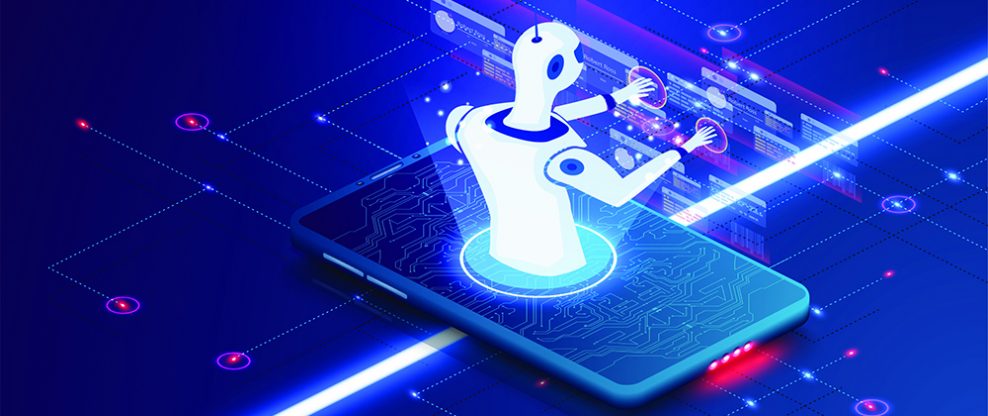(Hypebot) — If a computer automates a creative work, who owns the copyrights? The machine? The computers owner? No one? Let’s find out.
A guest post by Stephen Carlisle of Nova Southeastern University.
Lots of headlines were created last week when the U.S. Copyright Office refused registration, for the third time, a piece of artwork in which the author of the work was identified as “Creativity Machine.” 1 It is interesting to note that had the proposed author not admitted this fact, the registration probably would have issued. Here is the art in question:

The art piece, whose title is “A Recent Entrance to Paradise” certainly looks like it was created by a human. But since the proposed author choose to admit that is was created by a machine, not a human, this doomed the application to be rejected by the Copyright Office.
This ruling really should not have come as a surprise, as the U.S. Copyright Office’s Compendium of US Copyright Office Practices, Section 305 states quite clearly:
“U.S. Copyright Office will register an original work of authorship, provided that the work was created by a human being. The copyright law only protects ‘the fruits of intellectual labor’ that ‘are founded in the creative powers of the mind.’ (citation omitted) Because copyright law is limited to ‘original intellectual conceptions of the author,’ the Office will refuse to register a claim if it determines that a human being did not create the work.” 2
The Courts have followed this line of reasoning.
In a case where the contents of a book were “dictated” to the copyright claimant by “non-human spiritual beings,” the court refused to grant copyright protection absent the showing of some human involvement in the creation of the work. 3 The Court held:
“[S]ome element of human creativity must have occurred in order for the Book to be copyrightable”…it is not creations of divine beings that the copyright laws were intended to protect.” 4
Similarly held to be ineligible for copyright are photographs taken by a monkey, 5 and a “living garden.” 6
More interesting was the proponent’s argument as to how he acquired copyright. If the work was indeed copyrightable, and the work was created entirely by the “Creativity Machine,” how did the proposed owner obtain the copyright? According to the claimant, the copyright was transferred to him by “work for hire” because of his “ownership of the machine.” 7
The implications of this are quite staggering. As we rush further and further into creating smarter and smarter artificial intelligence machines, is their entire output my property because “I own you”? Are the machines in effect, slaves that have no rights? Also rather daunting, what are we going to do if we decide that machines DO in fact have rights, as the proponent suggests?
In furtherance of this line of thought, the proponent points out that corporations, who are non-human, can claim and own copyrights, often through work for hire. 8 The problem with this line of reasoning is twofold: first, corporations are not flesh and blood persons, but are treated as persons under the law. They can own property, sue and be sued and create copyrightable works. Secondly, these are all accomplished because the corporations are run and staffed by people, not machines.
The Copyright Office rejects these arguments, based on the fact that “creativity machine” is incapable of legal consent. It cannot enter into a work for hire agreement because it cannot enter into a “binding legal contract,” either to serve as an employee or independent contractor. 9
So not only is the AI work not copyrightable, for lack of human involvement, but even if it was copyrightable, it cannot be transferred from the machine because the machine cannot give legal consent or enter into contracts.
So what are the practical ramifications of the Copyright Office ruling?
Lying. And lots of it.
For the simple reason that somewhere along the line, as demonstrated here, people are going to want copyright protection for “their” AI generated work of art. Since a copyright lawsuit requires registration, if in the registration request the applicant is honest as to the role of the AI, the Copyright Office will reject it, and no lawsuit can be filed. So, the only recourse is to lie on the application, and state that the registrant and the author are in fact the same person. In other words, fraud on the Copyright Office.
I can expect in a lawsuit of this type that there will be some rather intense examination of what precisely the purported author’s contribution is to the AI work. Because, as the Copyright Office has explained, the AI output has no copyright whatsoever, and the purported author has no way of getting ownership of it.
Or, let’s flip the situation around. Suppose the AI work is itself infringing, a possibility brought up by my previous blog post on the subject. 10 If registration for the offending work has been made, and the claimant is listed as “author,” will the purported author be prevented from maintaining in the suit that all the infringement was done by the AI machine?
Are we in The Matrix yet?
Or just slowly closing in on making the old phrase of deus ex machine a reality?





























